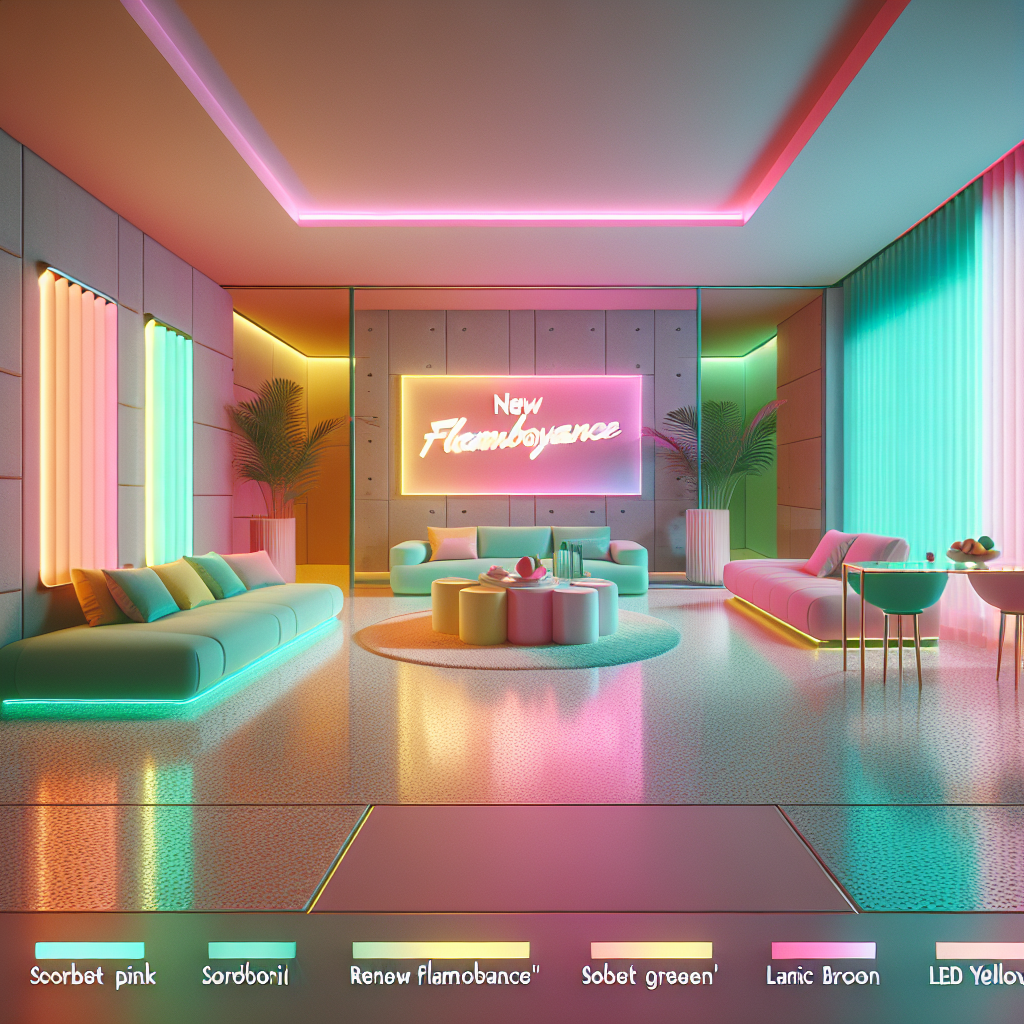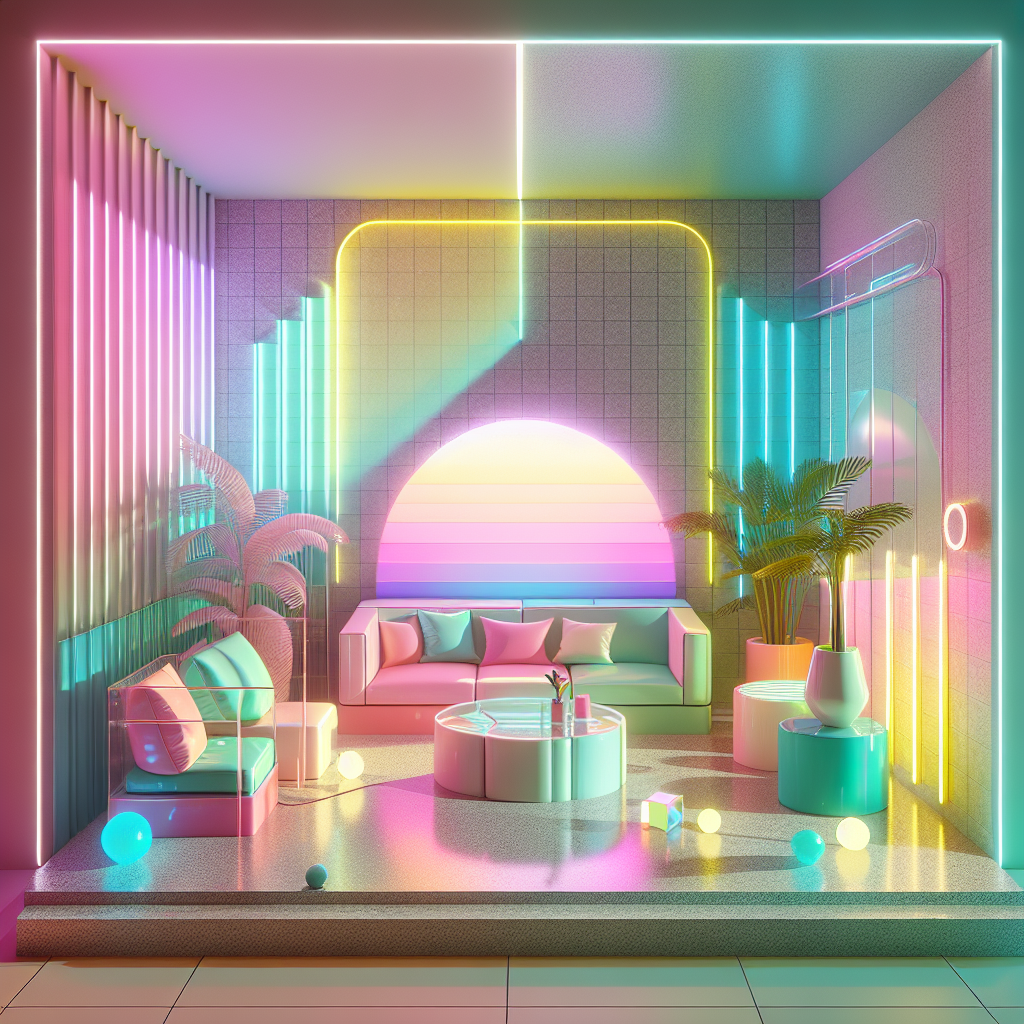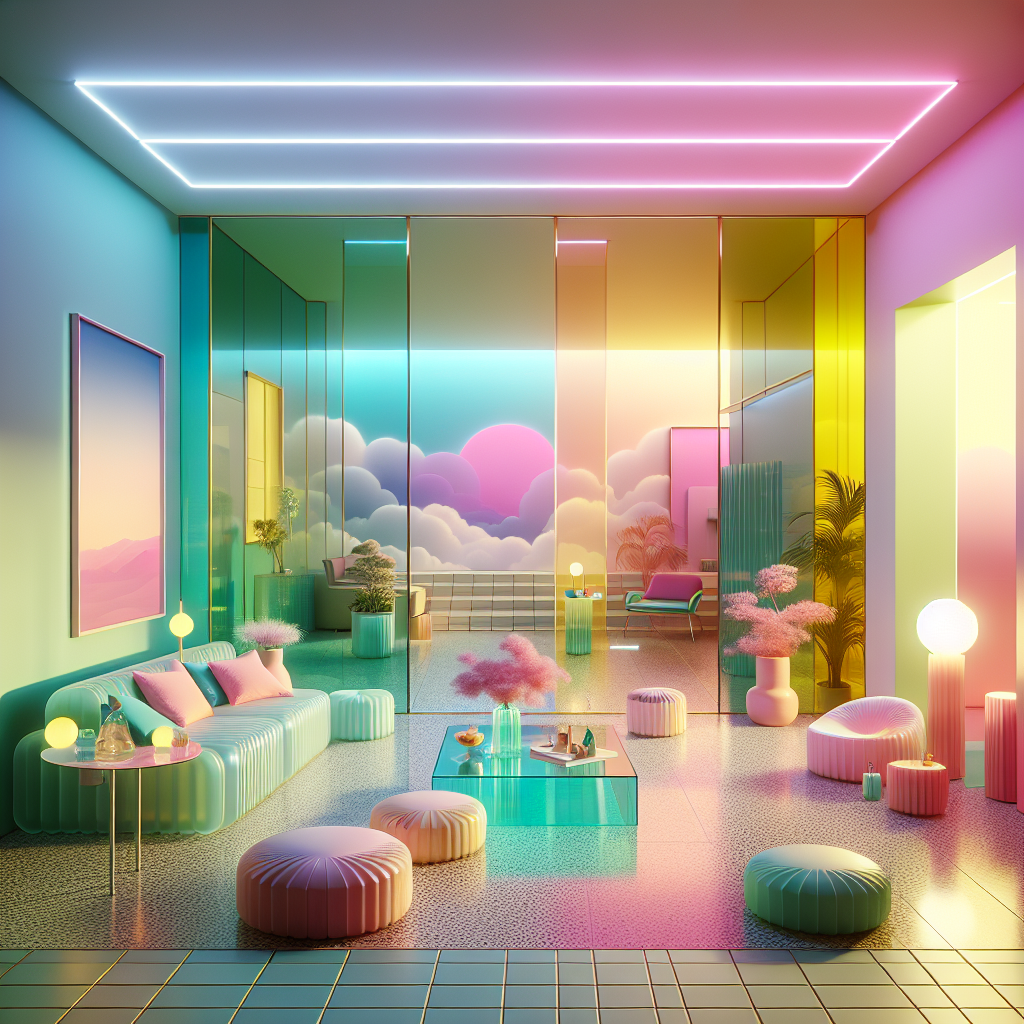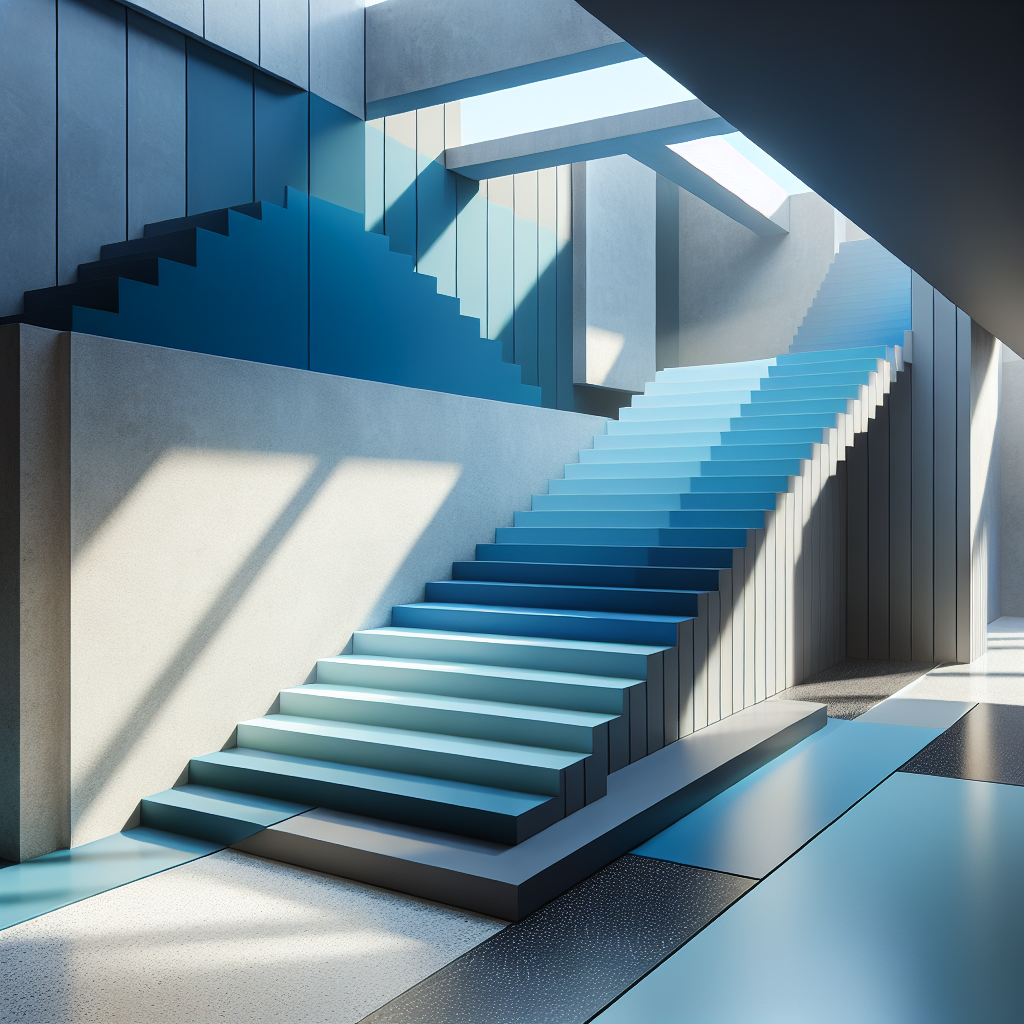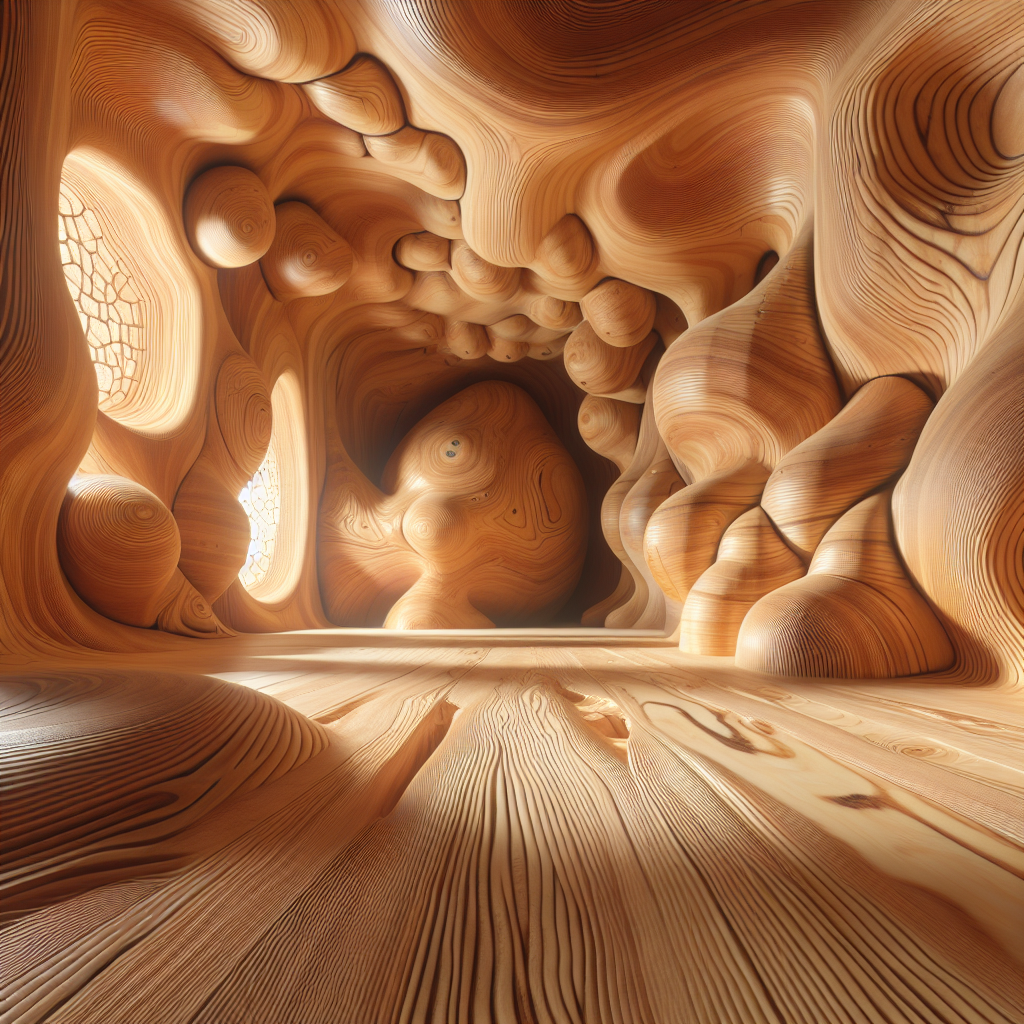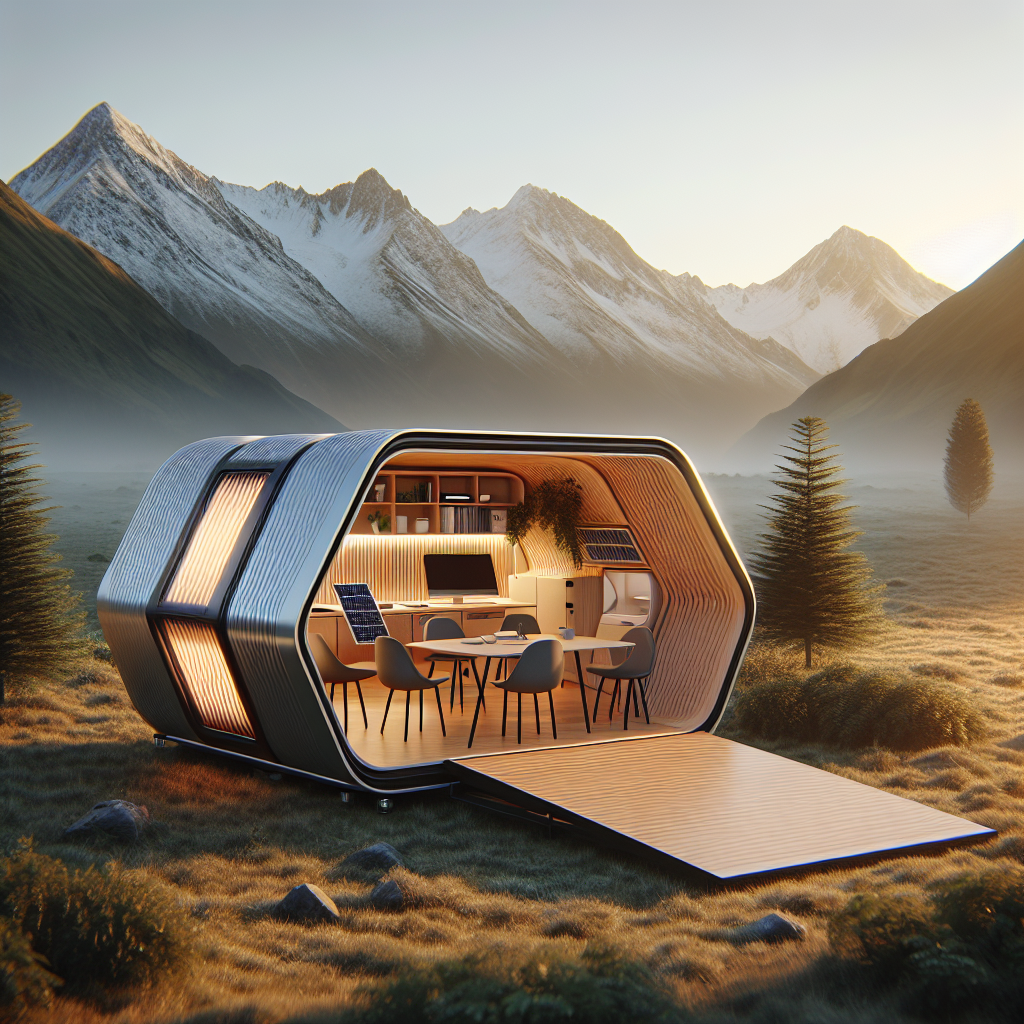The new flamboyance: pastel neon bridging retro and futuristic decor
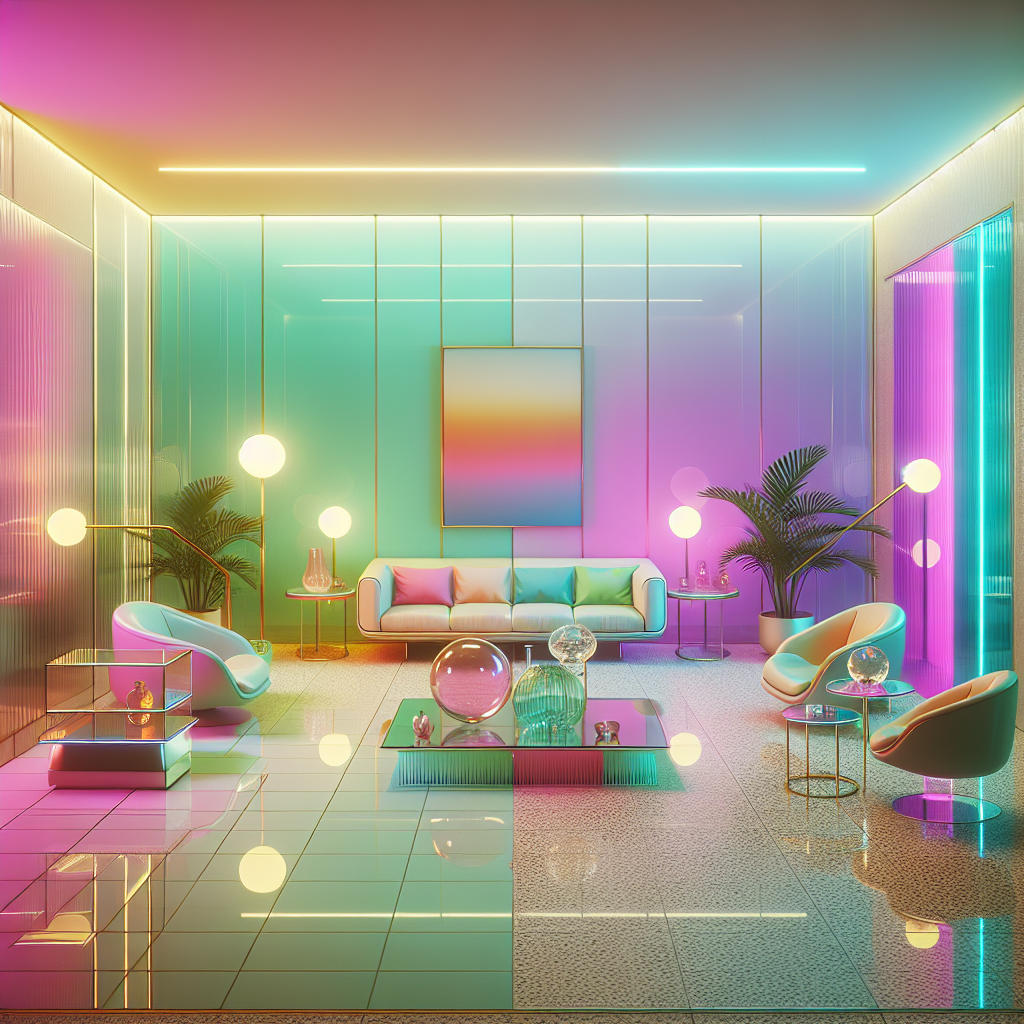
The New Flamboyance: Pastel Neon Bridging Retro and Futuristic Décor
There is a quiet revolution unfolding in the world of interior design—one that hums with electric nostalgia and glows with a forward-looking optimism. Pastel neon décor, a chromatic paradox of softness and intensity, is redefining how designers approach color, light, and emotion in contemporary spaces. This aesthetic—somewhere between the candy-coated optimism of the 1980s and the sleek minimalism of tomorrow’s smart homes—embodies what can only be described as the new flamboyance.
The Chromatic Renaissance: When Retro Meets the Future
Pastel neon is not merely a color trend; it is a cultural bridge. Its palette—think sorbet pinks, mint greens, lilac blues, and lemon yellows illuminated by subtle neon undertones—draws from the Memphis Group’s playful postmodernism while embracing the technological glow of the digital age. The result is a visual language that feels both familiar and futuristic, evoking the warmth of analog nostalgia and the precision of LED innovation.
Designers are increasingly turning to this hybrid aesthetic to counterbalance the sterility of hyper-minimalist interiors. The effect is immersive and emotional—spaces that feel alive, humming softly with color gradients that shift under natural and artificial light. It’s no coincidence that this resurgence aligns with the rise of color theory in architectural design as a central tool for emotional storytelling in interiors.
Illuminated Softness: The Science of Pastel Neon
At its core, pastel neon thrives on the tension between luminosity and subtlety. The science behind this lies in the interplay of low-saturation hues with high-luminance lighting. When diffused LED strips or electroluminescent panels are paired with matte pastel surfaces, the result is a soft radiance that seems to emanate from within the material itself. This technique, often seen in contemporary hospitality and retail design, creates an ethereal ambiance—spaces that appear to glow rather than simply reflect light.
Architectural lighting specialists are experimenting with phosphorescent coatings and programmable RGB systems to fine-tune this effect. The approach recalls the cinematic glow of Blade Runner 2049’s futuristic cityscapes, but with a gentler, more human sensibility. It’s less about spectacle and more about serenity—neon that soothes rather than shouts.
Material Alchemy: From Acrylics to Bioplastics
The material palette supporting pastel neon interiors is as innovative as the color story itself. Designers are embracing translucent acrylics, frosted glass, and sustainable bioplastics to diffuse light in controlled yet organic ways. These materials not only enhance luminosity but also contribute to the growing demand for biodegradable architecture and eco-conscious interiors.
In Milan’s latest design showcases, we’ve seen tables crafted from recycled resin embedded with micro-LEDs, walls coated in thermochromic paints that shift hue with temperature, and pendant lights that mimic the iridescence of soap bubbles. The tactile dimension of these materials adds depth to the visual softness of pastel neon—inviting touch, reflection, and even interaction.
Emotional Architecture: Designing with Light and Memory
Pastel neon’s emotional resonance lies in its ability to trigger collective memory. It references the optimism of mid-century diners, the dreamlike quality of vaporwave art, and the utopian glow of early digital interfaces. This nostalgic familiarity, when paired with contemporary spatial design, creates what psychologists describe as “affective resonance”—a sensory connection that fosters comfort and curiosity simultaneously.
In residential projects, this manifests as glowing wall alcoves, softly tinted glass partitions, and underlit furniture bases that seem to hover. In commercial settings, pastel neon becomes a branding tool—retail environments that evoke calm yet command attention. The approach aligns with the growing movement toward biophilic design, where sensory engagement and emotional well-being are central to spatial experience.
Case Studies: From Tokyo to Copenhagen
In Tokyo’s Shibuya district, Studio Anagram’s “Neon Bloom Café” encapsulates the aesthetic perfectly. The space combines powder-blue terrazzo floors with backlit lilac arches and transparent acrylic furniture that refracts light like a prism. The result is a surreal yet comforting environment—an urban sanctuary that feels both retro and otherworldly.
Meanwhile, in Copenhagen, the boutique hotel “Aurora Haus” by Atelier Nord reimagines Scandinavian minimalism through a pastel neon lens. Its lobby features diffused coral lighting behind perforated metal panels, while guest rooms glow with gradient hues that shift from dawn pink to twilight violet. The design not only enhances mood but also subtly aligns with circadian rhythms, a concept supported by studies from the lighting design community emphasizing the psychological impact of color temperature.
Digital Craftsmanship: Technology as an Aesthetic Medium
The rise of pastel neon décor coincides with advancements in digital fabrication and smart lighting systems. Designers are now using parametric modeling to choreograph light behavior across surfaces, creating environments that evolve dynamically throughout the day. This intersection of craft and code echoes the principles explored in augmented reality design innovation, where physical and digital layers merge seamlessly.
Smart home ecosystems have also embraced this aesthetic. Voice-controlled lighting allows users to modulate hue and intensity, transforming living spaces into adaptive canvases. The result is a new kind of domestic intimacy—homes that respond emotionally to their inhabitants, glowing gently in sync with mood and time.
The Cultural Pulse: Why Pastel Neon Resonates Now
The resurgence of pastel neon speaks to a broader cultural desire for optimism and self-expression after years of muted minimalism. It’s a rebellion against beige conformity—a chromatic liberation that celebrates individuality, joy, and imperfection. In an era dominated by digital screens and virtual experiences, these glowing hues offer a tangible form of digital warmth, translating the aesthetics of the online world into physical space.
This aesthetic also aligns with the cyclical nature of design history. Just as Art Deco once fused opulence with modernity, pastel neon fuses nostalgia with futurism. It represents a collective yearning for beauty that feels both timeless and timely—a design language that acknowledges the past while illuminating the path forward.
Looking Ahead: The Future of Chromatic Design
As we move deeper into the 2020s, pastel neon is poised to evolve beyond surface aesthetics into a philosophy of spatial storytelling. Expect to see its influence expand into architectural façades, urban lighting installations, and even sustainable product design. Its adaptability—equally at home in a minimalist apartment or a maximalist gallery—ensures its longevity as more than a passing trend.
Ultimately, the new flamboyance is not about excess but about expressive balance. It’s a reminder that design can be both playful and profound, nostalgic and visionary. In the glow of pastel neon, the boundaries between retro and futuristic décor dissolve—leaving behind a luminous spectrum of possibility.
Keywords: pastel neon décor, retro-futuristic design, interior lighting trends, color theory in architecture, sustainable materials, emotional design, contemporary interiors.
Published on 10/12/2025
